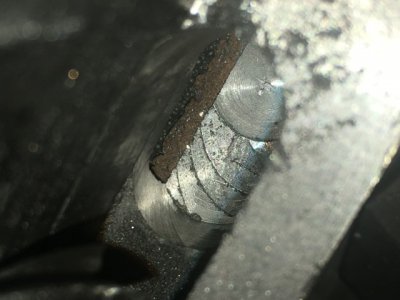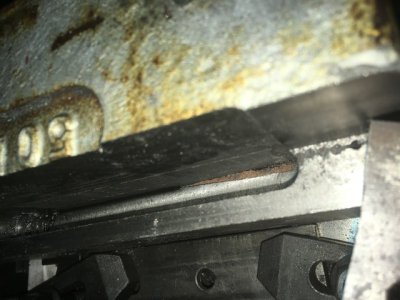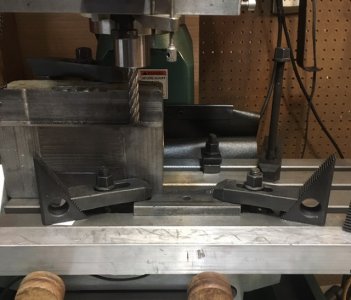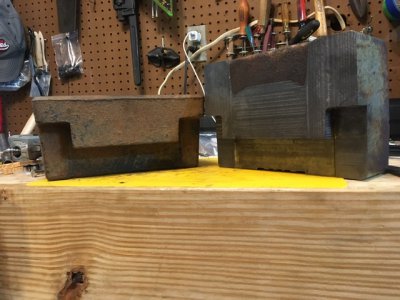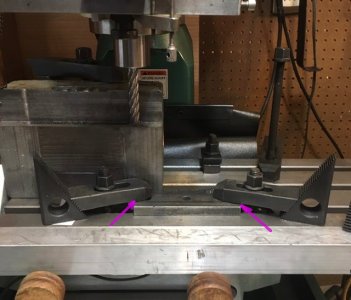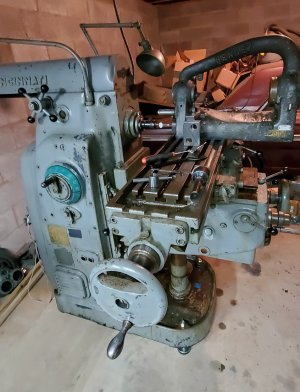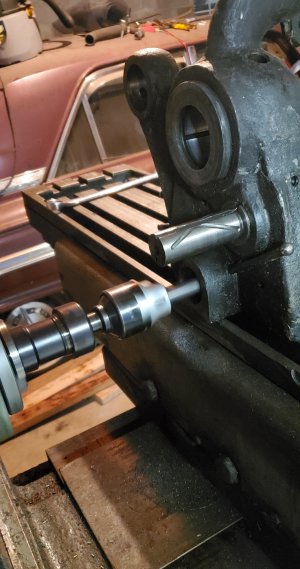- Joined
- Dec 3, 2017
- Messages
- 1,909
Here's an update for all of you who've been on the edge of your seats waiting to find out what happened. Lol
I used the horizontal band saw first. Then bought some extra long end mills. I tried plunging with little success. Unfortunately I'm as patient as I am stubborn. So I spent a few days slowly, carefully....painstakingly plunging 3/4" deep with the goal being a 1/2" wide by 1.25" deep by 9" long pocket. Finally I decided to take a stab at feeding right to left at .020" DOC. That worked extremely well. Except when the end mill hit something hard In the work, the clamps and fixturing collapsed, and the work started traveling across the table independent of the table. There's a picture below. I ended up getting my pocket done after maybe an hour except for one hard spot that just won't be machined. The piece isn't done yet, but the difficult portion is over. Due to the pieces purpose, I don't think this evidently unmachineable section will be a problem. There's also a void in the casting, which was full of tiny black balls that look like what I imagine gunpowder to look like. I'll take a picture if anyone actually is interested.
I used the horizontal band saw first. Then bought some extra long end mills. I tried plunging with little success. Unfortunately I'm as patient as I am stubborn. So I spent a few days slowly, carefully....painstakingly plunging 3/4" deep with the goal being a 1/2" wide by 1.25" deep by 9" long pocket. Finally I decided to take a stab at feeding right to left at .020" DOC. That worked extremely well. Except when the end mill hit something hard In the work, the clamps and fixturing collapsed, and the work started traveling across the table independent of the table. There's a picture below. I ended up getting my pocket done after maybe an hour except for one hard spot that just won't be machined. The piece isn't done yet, but the difficult portion is over. Due to the pieces purpose, I don't think this evidently unmachineable section will be a problem. There's also a void in the casting, which was full of tiny black balls that look like what I imagine gunpowder to look like. I'll take a picture if anyone actually is interested.



